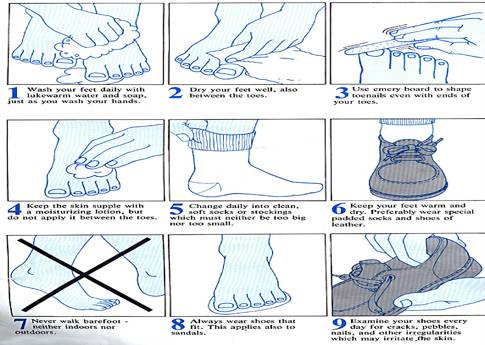เรามาศึกษากันว่า FEBUXOSTAT มีความปลอดภัยและผลข้างเคียงแค่ไหน ?
หากคุณกำลังเริ่มทำการรักษาด้วย FEBUXOSTAT จึงเป็นสิ่งสำคัญที่คุณจะต้องรู้ว่ามันได้รับการศึกษาอย่างมาก ในหลายๆคลินิก ซึ่งมีผู้ป่วยมากกว่า 4000 คนที่ป่วยด้วยโรคเกาต์นั้นเข้ามามีส่วนร่วมในการศึกษา บางที่ศึกษามามากกว่า 5 ปีแล้ว ความจริงการศึกษาเหล่านี้มีคลีนิคใหญ่ที่สุดที่เคยเข้าร่วมในการศึกษาด้วย ดูวิธีการวัดค่าความปลอดภัยของ FEBUXOSTAT มาวิเคราะห์บางผลการวิจัยจากการศึกษาทางคลินิกกัน
Febuxostat อาจก่อให้เกิดผลข้างเคียงได้ในบางคน ที่พบมากที่สุดผลข้างเคียง:
- ปัญหาเกี่ยวกับตับ
- อาการคลื่นเหียน
- การกระจายของโรคเกาต์
- อาการปวดข้อ
- การระบาด
คุณหมอผู้ที่ดูแลสุขภาพของคุณอาจจะทำการทดสอบเลือดเพื่อตรวจสอบการทำงานของตับของคุณในขณะที่คุณจะใช้ FEBUXOSTAT
มีผู้ป่วยจำนวนเล็กน้อยที่เป็นโรคหัวใจจะมีอาการของโรคหัวใจกำเริบ, strokes กล่าวคือ อาจมีการแตก ตีบ หรือตันของหลอดเลือดเหล่านี้ ทำให้เนื้อสมองบางส่วนที่ทำหน้าที่ควบคุมการทำงานของร่างกายตายไปและหยุดสั่งงาน จึงทำให้เกิดอาการอัมพาตของร่างกายส่วนนั้น ๆ ขึ้นอาการมักจะเกิดขึ้นฉับพลันทันที เรียกว่า โรคลมอัมพาต หรือ สโตรก (Stroke) และการเสียชีวิตที่เกี่ยวข้องกับหัวใจ ที่ได้เห็นในการศึกษาทางคลินิก เหตุการณ์เหล่านี้มันไม่ได้เกิดจาก FEBUXOSTAT
บอกคุณหมอผู้ที่ดูแลสุขภาพของคุณเกี่ยวกับปัญหาของตับหรือไตหรือมีประวัติของโรคหัวใจหรือโรคหลอดเลือดสมอง
บอกคุณหมอผู้ที่ดูแลสุขภาพของคุณถ้ามันลามไปที่อื่นมากขึ้นหรือมีผลข้างเคียงใด ๆ ที่รบกวนจิตใจคุณหรือว่าไม่ได้หายไป
นี่ไม่ได้เป็นผลข้างเคียงทั้งหมดที่เป็นไปได้ของ FEBUXOSTAT สำหรับข้อมูลเพิ่มเติมให้ถามคุณหมอผู้ที่ดูแลสุขภาพของคุณหรือดาวน์โหลด ข้อมูลการจ่ายยา ของเรา .
จะเกิดอะไรขึ้นถ้าฉันมีอาการโรคเกาต์กำเริบในขณะที่รับประทาน FEBUXOSTAT?
โรคเกาต์อาจกำเริบขึ้นเมื่อคุณเริ่มต้นการรักษาด้วยยา (เช่น FEBUXOSTAT, allopurinol และ probenecid) เพื่อลดกรดยูริคของคุณ สิ่งนี้อาจจะเกิดขึ้นเมื่อผลึกเริ่มละลายในข้อต่อของคุณเมื่อระดับกรดยูริคของคุณลงไป คุณหมอที่ดูแลสุขภาพคุณอาจจะบอกคุณให้ใช้ยาอื่น ๆ เพื่อช่วยป้องกันหรือรักษาอาการที่กำเริบในระหว่างการรักษาเบื้องต้น ถ้าคุณหมอที่ดูแลสุขภาพคุณให้ยาลดกรดยูริก คุณควรที่จะใช้ยาต่อแม้ว่าอาการจะกำเริบ
เพื่อวางแผนการรักษาโรคเกาต์ของคุณอย่างถูกต้อง ควรจะปรึกษาคุณหมอที่ดูแลสุขภาพของคุณเกี่ยวกับ FEBUXOSTAT และยาอื่นๆที่คุณจะใช้
การใช้ยา FEBUXOSTAT ร่วมกับยาอื่น ๆ
เพื่อความแน่ใจคุณควรปรึกษาคุณหมอที่ดูแลสุขภาพของคุณเกี่ยวกับยาต่างๆ, วิตามิน,หรืออาหารเสริมที่คุณกำลังใช้อยู่ อาจมียาบางชนิดที่ไม่ควรนำมาใช้ร่วมกับ FEBUXOSTAT ยาเหล่านั้นรวมถึง Azathioprine, Mercaptopurine ด้วยหากคุณเป็นโรคเกาต์และคุณต้องรับประทาน colchicine, naproxen, indomethacin, hydrochlorothiazide หรือ warfarin, คุณหมอที่ดูแลสุขภาพของคุณยังคงสามารถสั่งยา FEBUXOSTAT พร้อมกับยาเหล่านี้โดยไม่ต้องกังวลเกี่ยวกับการสลับยาหรือเปลี่ยนขนาดยา
ปริมาณเท่าไรที่ฉันควรใช้
FEBUXOSTAT สามารถใช้ได้สองขนาด: 40 มก. หรือ 80 มก. วันละครั้ง ปรึกษาคุณหมอที่ดูแลสุขภาพของคุณเกี่ยวกับขนาดยาที่เหมาะสมสำหรับคุณผู้ป่วยที่มีปัญหาเรื่องไตหรือตับน้อยถึงปานกลาง สามารถใช้ยา FEBUXOSTAT ขนาดเดียวกับผู้ป่วยปรกติได้ . ผู้ป่วยที่สูงอายุก็สามารถใช้ยาขนาดเดียวกันได้เช่นกัน
* มีการทดลองกับผู้ป่วยที่มีปัญหาไตอย่างรุนแรงจำนวนน้อยกับ FEBUXOSTAT ผู้ป่วยที่มีปัญหาเกี่ยวกับตับอย่างรุนแรงไม่ได้ถูกศึกษาเลย
ข้อมูลนี้ไม่ได้ถูกนำมาใช้ในการพูดคุยกับคุณหมอที่ดูแลสุขภาพของคุณเกี่ยวกับเงื่อนไขทางการแพทย์ของคุณหรือการรักษาของคุณ
EMEA และสำนักงานอาหารและยาของสหรัฐอเมริกา (FDA) ได้อนุมัติการใช้ยา FEBUXOSTAT (febuxostat/uloric) ในขนาด 40 และ 80 มิลลิกรัม รับประทานวันละครั้ง เพื่อรักษาภาวะกรดยูริคในเลือดสูงในผู้ป่วยโรคเกาต์ FEBUXOSTAT ให้ความแตกต่างที่สำคัญบางอย่างในผู้ป่วยที่มีปัญหาไตรุนแรงน้อยถึงปานกลาง ผู้ป่วยจำนวนมากที่มีปัญหาไตน้อยถึงปานกลางรับประทาน FEBUXOSTAT ถึงระดับกรดยูริคที่ดี (น้อยกว่า 6 mg / dl) ในขณะที่เทียบกับ allopurinol ซึ่งแตกต่างจากผู้ป่วยที่ใช้ allopurinol ผู้ป่วยที่มีปัญหาไตอ่อนถึงปานกลางไม่ต้องเปลี่ยนยา FEBUXOSTAT มีการศึกษาเพียงจำนวนน้อยของผู้ป่วยที่มีปัญหาไตอย่างรุนแรง หากคุณมีปัญหาเกี่ยวกับไตขอการดูแลเป็นเกี่ยวกับความแตกต่างระหว่างยาที่ใช้ในการลดระดับกรดยูริค FEBUXOSTAT เพื่อให้ง่ายต่อการจ่ายยา
ดังนั้นในปัจจุบันไม่จำเป็นจะต้องใช้ allopurinol รักษาโรคเก๊าท์ (Gout) เพียงอย่างเดียวอีกต่อไปแล้ว ถ้าคุณยังคงเป็นโรคเก๊าท์ (Gout) และยังคงมีระดับกรดยูริกที่สูงอยู่ไม่หายซักที ตอนนี้คุณมีตัวเลือกในการรักษาแล้ว ผู้ป่วยที่ใช้ FEBUXOSTAT 80 มิลลิกรัม 70% ระดับกรดยูริคกลับสู่ปรกติ และกลับมามีสุขภาพที่ดี
ผลข้างเคียงที่มีการรายงาน นัยสำคัญทางสถิติ (P ; 0.001) ได้แก่ การทำงานของตับผิดปกติ, คลื่นไส้, ปวดข้อและมีผื่น ในผู้ที่มีการทำงานของตับและไตผิดปกติในระดับน้อยถึงปานกลางนั้น ไม่ต้องปรับขนาดยา FEBUXOSTAT มีข้อบ่งใช้เฉพาะการรักษาภาวะกรดยูริคในเลือดสูงของผู้ป่วยโรคเกาต์เท่านั้น ไม่รวมถึงการรักษาภาวะกรดยูริคในเลือดสูงที่ไม่แสดงอาการ (asymptomatic hyperuricemia) ห้ามใช้ FEBUXOSTAT ร่วมกับ azathioprine, mercaptopurine หรือ theophylline ในการศึกษาทางคลินิกพบอุบัติการณ์ของ cardiovascular thromboembolic ในกลุ่ม FEBUXOSTAT (0.74/100 คน-ปี) มากกว่ากลุ่ม allopurinol (0.60/100 8 คน-ปี) ดังนั้นผู้ที่ใช้ยา FEBUXOSTAT ควรมีการติดตามอาการและอาการแสดงของ myocardial infarction และ stroke รวมทั้งประเมินการทำงานของตับด้วย เพราะมีรายงานการเพิ่มขึ้นของเอนไซม์ transaminase โดยไม่สัมพันธ์กับขนาดยา
ผู้ป่วยที่ใช้ FEBUXOSTAT 80 มิลลิกรัม 70% ระดับกรดยูริคกลับสู่ปรกติ และกลับมามีสุขภาพที่ดีสุขภาพดี สำนักงานคณะกรรมการอาหารและยาของสหรัฐอเมริกา (FDA) ได้อนุมัติการใช้ยา FEBUXOSTAT ในขนาด 40 และ 80 มิลลิกรัม รับประทานวันละครั้งเพื่อรักษาภาวะกรดยูริคในเลือดสูงในผู้ป่วยโรคเกาต์ จากการรวบรวมผลการศึกษาทางคลินิกหลายการศึกษา มีผู้เข้าร่วมการศึกษามากกว่า 4,000 คน โดยบางการศึกษาใช้ระยะเวลามากกว่า 5 ปี พบว่า FEBUXOSTAT ซึ่งเป็นยาในกลุ่ม xanthine oxidase inhibitor มีความปลอดภัยและมีประสิทธิภาพในการลดระดับยูริค แอสิดในเลือดของผู้ป่วยโรคเกาต์ที่มีภาวะกรดยูริคในเลือดสูง การศึกษา CONFIRMS เป็นการศึกษาทางคลินิกในระยะที่ 3 แสดงถึงประสิทธิภาพของ febuxostat 80 มิลลิกรัมในการลดระดับยูริคแอสิดในเลือดให้ต่ำกว่า 6.0 mg/dL ได้ดีกว่าการใช้ FEBUXOSTAT 40 มิลลิกรัม หรือ allopurinol 300/200 มิลลิกรัมอย่างมีนัยสำคัญทางสถิติ (P ; 0.001) ผลข้างเคียงที่มีการรายงานได้แก่ การทำงานของตับผิดปกติ, คลื่นไส้, ปวดข้อและมีผื่น ในผู้ที่มีการทำงานของตับและไตผิดปกติในระดับน้อยถึงปานกลางนั้น ไม่ต้องปรับขนาดยา FEBUXOSTAT มีข้อบ่งใช้เฉพาะการรักษาภาวะกรดยูริคในเลือดสูงของผู้ป่วยโรคเกาต์เท่านั้น ไม่รวมถึงการรักษาภาวะกรดยูริคในเลือดสูงที่ไม่แสดงอาการ (asymptomatic hyperuricemia) ห้ามใช้ FEBUXOSTAT ร่วมกับ azathioprine, mercaptopurine หรือ theophylline * ศึกษาของผู้ป่วยที่มีปัญหาไตอย่างรุนแรงมีเพียงจำนวนน้อย ขอคำแนะนำจากแพทย์ผู้เชี่ยวชาญเฉพาะทางด้านออร์โธปิดิกส์ (กระดูกและข้อ) ของคุณ
การใช้ FEBUXOSTAT เป็นยาตามใบสั่งที่ใช้ในการลดระดับกรดยูริคในเลือดในผู้ใหญ่ที่มีโรคเกาต์ DEURIC ไม่ได้สำหรับการรักษาของกรดยูริกสูงที่ไม่มีประวัติของโรคเกาต์ ผลส่วนบุคคลอาจแตกต่างกัน ข้อมูลความปลอดภัยที่สำคัญ ไม่ได้ใช้ FEBUXOSTAT ถ้าคุณจะพา azathioprine หรือ mercaptopurine โรคเกาต์ของคุณอาจมีอาการกำเริบขึ้นเมื่อคุณเริ่มต้นการ FEBUXOSTAT ไม่หยุดการ FEBUXOSTAT ของคุณแม้ว่าคุณจะมีอาการกำเริบ ผู้ให้บริการดูแลสุขภาพของคุณอาจทำให้คุณยาอื่น ๆ ที่จะช่วยป้องกันโรคเกาต์ของคุณมีอาการกำเริบ ขนาดเล็กจำนวนมากจากการโจมตีหัวใจ, จังหวะ, และเสียชีวิตที่เกี่ยวข้องกับโรคหัวใจได้เห็นในการศึกษาทางคลินิก มันไม่ได้เป็นบางอย่างที่ก่อให้เกิดความ FEBUXOSTAT เหตุการณ์เหล่านี้ ขอคำแนะนำจากแพทย์ผู้เชี่ยวชาญเฉพาะทางด้านออร์โธปิดิกส์ (กระดูกและข้อ) ของคุณเกี่ยวกับตับหรือไตปัญหาหรือมีประวัติของโรคหัวใจหรือโรคหลอดเลือดสมอง ขอคำแนะนำจากแพทย์ผู้เชี่ยวชาญเฉพาะทางด้านออร์โธปิดิกส์ (กระดูกและข้อ) ของคุณอาจจะทำการทดสอบเลือดเพื่อตรวจสอบการทำงานของตับของคุณในขณะที่คุณจะพา DEURIC ที่พบมากที่สุดผลข้างเคียงของ FEBUXOSTAT เป็นปัญหาเกี่ยวกับตับ, คลื่นไส้, โรคเกาต์มีอาการกำเริบปวดข้อและผื่น
(จากเดิมที่ US FDA เคยปฏิเสธการรับรองข้อบ่งใช้ของ FEBUXOSTAT ไปครั้งหนึ่ง เมื่อปี พ.ศ. 2548 เพราะมีรายงานว่าผู้ป่วยที่ได้รับยา FEBUXOSTAT อาจมีความเสี่ยงต่อการเกิดโรคหัวใจและการเสียชีวิตมากกว่าผู้ป่วยที่ได้รับยา allopurinol) อาการข้างเคียงจากการใช้ยาที่พบบ่อยคือ การติดเชื้อในระบบทางเดินหายใจ ความผิดปกติของระบบกล้ามเนื้อ และถ่ายเหลว ผู้ป่วยทนต่อยาได้ดี การใช้ยาระยะยาวไม่มีผลทำให้อาการข้างเคียงเพิ่มขึ้น ทางบริษัทยังมีแผนที่จะศึกษาทางคลินิกอย่างต่อเนื่องในระยะที่ 4 เพื่อเปรียบเทียบประสิทธิภาพระหว่าง FEBUXOSTAT กับ allopurinol ในการรักษาผู้ป่วยโรคเก๊าท์ที่มีอาการกำเริบ (flare-ups) เพื่อนำเสนอข้อมูลเพิ่มเติมให้แก่ US FDA นอกจากนี้ ยังมีการติดตามรายงานผลด้านความปลอดภัยของยา (ระยะที่ 1) ภายหลังการวางจำหน่ายในท้องตลาด โดยเน้นที่การเกิดอันตรกิริยาระหว่างยา FEBUXOSTAT กับ theophylline ขั้นตอนการทำงานของ FEBUXOSTAT
ช่วยลดสาเหตุของโรคเกาต์ให้มีขนาดจัดการได้มากขึ้น
ขอเริ่มต้นด้วยจริง ๆ สนุก FEBUXOSTAT เป็นครั้งแรกที่องค์การอาหารและยาได้รับการอนุมัติยาตราสำหรับการลดกรดยูริคในผู้ใหญ่ที่มีโรคเกาต์ในกว่า 40 ปี! ที่กล่าวว่าคุณอาจสงสัยเพิ่มเติมเกี่ยวกับ FEBUXOSTATสิ่งที่มันไม่และวิธีการทำงานที่จะช่วยลดระดับกรดยูริคของคุณ
FEBUXOSTAT คือ อะไร
FEBUXOSTAT เป็นยาตามใบสั่งแพทย์ที่ช่วยลดระดับกรดยูริคในผู้ป่วยที่เป็นโรคเกาต์ FEBUXOSTAT ไม่สามารถใช้รักษาผู้ป่วยที่มีภาวะของกรดยูริกสูง แต่ไม่เคยมีประวัติของโรคเกาต์มาก่อน
สาเหตุของโรคเกาต์เป็นกรดยูริคสูง งาน FEBUXOSTAT โดยการหยุดร่างกายจากพิวรีนกลายเป็นกรดยูริคที่จะช่วยให้คุณเข้าถึงระดับสุขภาพ (น้อยกว่า 6 mg / dl)
หากแพทย์ผู้เชี่ยวชาญเฉพาะทางด้านออร์โธปิดิกส์ (กระดูกและข้อ) ของคุณกำหนด FEBUXOSTAT คุณควร จะเอามันทุกวันเพื่อช่วยลดระดับกรดยูริคของคุณ และให้มันต่ำเมื่อเวลาผ่านไป ผลส่วนบุคคลอาจแตกต่างกัน
โรคเกาต์ของคุณอาจมีอาการกำเริบขึ้นเมื่อคุณเริ่มต้นการ FEBUXOSTAT หากคุณมีอาการกำเริบขึ้นในขณะที่การ FEBUXOSTAT ไม่หยุดกินยาของคุณ ขอคำแนะนำจากแพทย์ผู้เชี่ยวชาญเฉพาะทางด้านออร์โธปิดิกส์ (กระดูกและข้อ) ของคุณอาจจะบอกคุณที่จะใช้ยาอื่น ๆ เพื่อช่วยป้องกันหรือจัดการโรคเกาต์มีอาการกำเริบขึ้นในระหว่างการรักษาเบื้องต้น
FEBUXOSTAT อาจทำงานสำหรับคุณ
การวิจัยแสดงให้รักษาระดับกรดยูริกของคุณต่ำ (น้อยกว่า 6 mg / dl) สามารถลดการโจมตีเกาต์อนาคตเมื่อเวลาผ่านไป หากคุณมีโรคเกาต์ FEBUXOSTAT สามารถช่วยให้คุณควบคุมกรดยูริกของคุณ
ในการศึกษาทางคลินิก:
FEBUXOSTAT ได้รับการพิสูจน์ประสิทธิภาพในการลดกรดยูริคในระดับที่ดีต่อสุขภาพ (น้อยกว่า 6 mg / dl)
เมื่อ FEBUXOSTAT ถูกเมื่อเทียบกับ allopurinol ยาอีกมักจะใช้เพื่อลดกรดยูริค:
- ขณะที่ผู้ป่วยจำนวนมากใน FEBUXOSTAT 40 มก. ถึงระดับกรดยูริคที่มีสุขภาพดีเป็นผู้ที่อยู่ใน allopurinol
- ขึ้นสองเท่าผู้ป่วยจำนวนมากเมื่อ FEBUXOSTAT 80 มิลลิกรัมถึงระดับกรดยูริคที่มีสุขภาพดีเป็นผู้ที่อยู่ใน allopurinol
FEBUXOSTAT ได้รับการศึกษาในกว่า 4000 ผู้ป่วยในบางเวลากว่าห้าปีที่ผ่านมา
ดูหนัง
FEBUXOSTAT ง่ายต่อการใช้ หนึ่ง 40 mg หรือยามิลลิกรัมทุกวัน 80
คุณสามารถใช้ FEBUXOSTAT มีหรือไม่มีอาหาร
คุณสามารถใช้ FEBUXOSTAT กับยา antacids
คุณสามารถใช้โดยไม่ต้องเปลี่ยน FEBUXOSTAT ยาของคุณหากคุณมีการใช้ยาที่พบบ่อยบางอย่างรวมถึง:
โคลชิซิน
naproxen (Aleve ®, Naprosyn)
indomethacin (Indocin)
hydrochlorothiazide (Aquazide H, HydroDIURIL)
warfarin (Coumadin)
Desipramine (Norpramin)
แพทย์ผู้เชี่ยวชาญเฉพาะทางด้านออร์โธปิดิกส์ (กระดูกและข้อ) ของคุณอาจจะทำการทดสอบเลือดเพื่อตรวจสอบการทำงานของตับของคุณในขณะที่คุณจะพา FEBUXOSTAT
ตรวจสอบการใช้ FEBUXOSTAT เป็นแพทย์ผู้เชี่ยวชาญเฉพาะทางด้านออร์โธปิดิกส์ (กระดูกและข้อ) ของคุณบอกคุณ
ผลกระทบ FEBUXOSTAT ความปลอดภัยและด้านข้าง
ทำความเข้าใจผลกระทบ FEBUXOSTAT ความปลอดภัยและด้านข้าง หากคุณกำลังเริ่มการรักษาด้วย FEBUXOSTAT จึงเป็นสิ่งสำคัญที่จะรู้ว่ามันได้รับการศึกษาอย่างกว้างขวางในการศึกษาทางคลินิกหลายมากกว่า 4000 ผู้ป่วยที่มีโรคเกาต์มามีส่วนร่วมในพวกเขาบางกว่า 5 ปี ในความเป็นจริงการศึกษาเหล่านี้ประกอบด้วยการศึกษาทางคลินิกที่ใหญ่ที่สุดของผู้ป่วยโรคเกาต์เคย ดูวิธีการวัด FEBUXOSTAT ขึ้น ทบทวนบางผลการวิจัยจากการศึกษาทางคลินิก .
ผลข้างเคียงที่เป็นไปได้
FEBUXOSTAT อาจก่อให้เกิดผลข้างเคียงได้ในบางคน ที่พบมากที่สุดผลข้างเคียง:
ปัญหาเกี่ยวกับตับ
ความเกลียดชัง
พลุโรคเกาต์
อาการปวดข้อ
ผื่น
แพทย์ผู้เชี่ยวชาญเฉพาะทางด้านออร์โธปิดิกส์ (กระดูกและข้อ)ของคุณอาจจะทำการทดสอบเลือดเพื่อตรวจสอบการทำงานของตับของคุณในขณะที่คุณจะพา FEBUXOSTAT
ขนาดเล็กจำนวนมากจากการโจมตีหัวใจ, จังหวะและความตายที่เกี่ยวข้องกับหัวใจได้เห็นในการศึกษาทางคลินิก มันไม่ได้เป็นบางอย่างที่ก่อให้เกิดความ FEBUXOSTAT เหตุการณ์เหล่านี้
บอกแพทย์ผู้เชี่ยวชาญเฉพาะทางด้านออร์โธปิดิกส์ (กระดูกและข้อ)เกี่ยวกับตับหรือไตปัญหาหรือมีประวัติของโรคหัวใจหรือโรคหลอดเลือดสมอง
บอกแพทย์ผู้เชี่ยวชาญเฉพาะทางด้านออร์โธปิดิกส์ (กระดูกและข้อ)ถ้าคุณพัฒนาผื่นมีผลข้างเคียงใด ๆ ที่รบกวนจิตใจคุณหรือว่าไม่ได้หายไป
เหล่านี้ไม่ได้ทั้งหมดของผลข้างเคียงที่เป็นไปได้ของ FEBUXOSTAT สำหรับข้อมูลเพิ่มเติมให้ถามแพทย์ผู้เชี่ยวชาญเฉพาะทางด้านออร์โธปิดิกส์ (กระดูกและข้อ)หรือดาวน์โหลดของเรา ข้อมูลการจ่ายยา .
อะไรขึ้นถ้าฉันสัมผัส Flare โรคเกาต์ในขณะที่การ FEBUXOSTAT?
เปลวไฟเกาต์อาจขึ้นเมื่อคุณเริ่มต้นการรักษาด้วยยา (เช่น FEBUXOSTAT, allopurinol และ probenecid) เพื่อลดกรดยูริคของคุณ เรื่องนี้อาจจะเกิดขึ้นเมื่อผลึกเริ่มละลายในข้อต่อของคุณเป็นระดับกรดยูริคของคุณลงไป แพทย์ผู้เชี่ยวชาญเฉพาะทางด้านออร์โธปิดิกส์ (กระดูกและข้อ)อาจจะบอกคุณที่จะใช้ยาอื่น ๆ เพื่อช่วยป้องกันหรือจัดการพลุในระหว่างการรักษาเบื้องต้น หากแพทย์ผู้เชี่ยวชาญเฉพาะทางด้านออร์โธปิดิกส์ (กระดูกและข้อ)จะช่วยให้คุณลดยากรดยูริกของคุณคุณควรให้สละได้แม้ระหว่างการโจมตี
เพื่อตรวจสอบโรคเกาต์วางแผนขวารักษาสำหรับคุณพูดคุยกับแพทย์ผู้เชี่ยวชาญเฉพาะทางด้านออร์โธปิดิกส์ (กระดูกและข้อ)
ยา FEBUXOSTAT และอื่น ๆ
ให้แน่ใจว่าได้บอกผู้ให้บริการดูแลสุขภาพของคุณเกี่ยวกับยาใด ๆ วิตามินหรืออาหารเสริมที่คุณกำลังการ มีบางชนิดของยาที่ไม่ควรนำมาด้วยเป็น FEBUXOSTAT เหล่านี้รวมถึง:
azathioprine
mercaptopurine
หากคุณมีโรคเกาต์และคุณกำลังการ colchicine, naproxen, indomethacin, hydrochlorothiazide หรือ warfarin, แพทย์ผู้เชี่ยวชาญเฉพาะทางด้านออร์โธปิดิกส์ (กระดูกและข้อ)ยังคงสามารถกำหนด FEBUXOSTAT พร้อมกับยาเหล่านี้โดยไม่ต้องกังวลเกี่ยวกับยาเปลี่ยนหรือเปลี่ยนยา
สิ่ง Dose ฉันควรจะ
FEBUXOSTAT สามารถใช้ได้ในสองขนาด: 40 มก. หรือ 80 มก. วันละครั้ง พูดคุยกับแพทย์ผู้เชี่ยวชาญเฉพาะทางด้านออร์โธปิดิกส์ (กระดูกและข้อ)เกี่ยวกับยาที่เหมาะสมสำหรับคุณ
ผู้ป่วยที่มีน้อยถึงปานกลางปัญหาไตหรือตับสามารถใช้ยาขนาดเดียวกันของ FEBUXOSTAT เป็นคนอื่น. ผู้ป่วยเก่าสามารถใช้ยาเดียวกันด้วย
* มีเพียงจำนวนน้อยของผู้ป่วยที่มีปัญหาไตอย่างรุนแรงถูกศึกษากับ FEBUXOSTAT ผู้ป่วยที่มีปัญหาเกี่ยวกับตับอย่างรุนแรงไม่ได้ศึกษา
ข้อมูลนี้ไม่ได้ใช้สถานที่ของการพูดคุยกับแพทย์ผู้เชี่ยวชาญเฉพาะทางด้านออร์โธปิดิกส์ (กระดูกและข้อ)เกี่ยวกับเงื่อนไขทางการแพทย์ของคุณหรือการรักษาของคุณ
คุณมีโรคเกาต์? ช่วยลดระดับกรดยูริกต่ำด้วย FEBUXOSTAT
หากคุณต้องการหลายคนที่มีโรคเกาต์อาจจะถึงเวลาที่จะนำ FEBUXOSTAT การทำงานสำหรับคุณ คุณอาจคิดว่าคุณจะตำหนิอย่างใดสำหรับการโจมตีเกาต์ของคุณ แต่สาเหตุของโรคเกาต์เป็นจริงสูงระดับกรดยูริคในเลือด
คุณไม่ได้เป็นสาเหตุของโรคเกาต์ของคุณ แต่คุณสามารถทำตามขั้นตอนที่จะช่วยลดกรดยูริคสูงและจัดการโรคเกาต์ของคุณ การลดระดับกรดยูริคที่ต่ำกว่า 6 มก. / ดลเป็นเป้าหมายสำหรับ การจัดการระยะยาวของโรคเกาต์ และ FEBUXOSTAT พิสูจน์ว่ามีประสิทธิภาพในการช่วยให้บรรลุเป้าหมายนี้
ในการศึกษาทางคลินิก FEBUXOSTAT 40 มก. ช่วยเป็นคนจำนวนมากและ FEBUXOSTAT 80 มิลลิกรัมช่วยขึ้นสองเท่าคนจำนวนมากถึงระดับกรดยูริคที่มีสุขภาพดี (น้อยกว่า 6 มก. / ดล) เทียบกับ allopurinol ยาอื่นที่มักจะใช้เพื่อลด กรดยูริค
ดังนั้นถ้าคุณมีโรคเกาต์เริ่มการรักษาที่จะช่วยให้ FEBUXOSTAT ลดระดับกรดยูริคของคุณสามารถขั้นตอนที่สำคัญในทิศทางที่ถูก!
เรียนรู้เกี่ยวกับความแตกต่าง FEBUXOSTAT เสนอเมื่อเทียบกับ allopurinol
วิธีการใช้ FEBUXOSTAT
DEURIC เป็นยาวันละครั้งที่คุณสามารถใช้เวลาทั้งที่มีหรือไม่มีอาหาร คุณสามารถนำติดตัวไปกับยาลดกรด ดังนั้นจึงควรจะง่ายที่จะทำให้การมีส่วนร่วมของชีวิตประจำวันของคุณ FEBUXOSTAT . . อาจหลังจากที่คุณแปรงฟันของคุณ มันมีอยู่ในทั้งสอง 40 มก. และ 80 มิลลิกรัม การดูแลสุขภาพมืออาชีพของคุณจะตัดสินใจซึ่งยาที่เหมาะสมสำหรับคุณ คุณเพียงแค่ต้องแน่ใจว่าจะใช้ตรงตามที่ FEBUXOSTAT เขาหรือเธอสั่งให้คุณ โรคเกาต์ของคุณอาจลุกเป็นไฟขึ้นเมื่อคุณเริ่มต้นการ FEBUXOSTAT หากคุณมีเปลวไฟในขณะที่การ FEBUXOSTAT ไม่หยุดกินยาของคุณ การดูแลสุขภาพมืออาชีพของคุณอาจจะบอกคุณที่จะใช้ยาอื่น ๆ เพื่อช่วยป้องกันหรือจัดการโรคเกาต์พลุในระหว่างการรักษาเบื้องต้น เรียนรู้เกี่ยวกับความสำคัญของการรักษาอย่างต่อเนื่องกับ FEBUXOSTAT การรักษาแพทย์ผู้เชี่ยวชาญเฉพาะทางด้านออร์โธปิดิกส์ (กระดูกและข้อ)ในทราบ ก่อนที่จะเริ่มการรักษา FEBUXOSTAT ให้แน่ใจว่าคุณเคยบอกแพทย์ผู้เชี่ยวชาญเฉพาะทางด้านออร์โธปิดิกส์ (กระดูกและข้อ)เกี่ยวกับปัญหาทางการแพทย์ใด ๆ ที่คุณมี นี้
เป็นสิ่งสำคัญโดยเฉพาะอย่างยิ่งในกรณีที่:
คุณมีปัญหาเกี่ยวกับตับหรือไต
คุณมีประวัติของโรคหัวใจหรือโรคหลอดเลือดสมอง
คุณตั้งครรภ์หรือวางแผนที่จะตั้งครรภ์
คุณนมหรือการวางแผนการใช้นมผสม
ยา FEBUXOSTAT และอื่น ๆ
มีบางชนิดของยาที่ไม่ควรนำมาด้วยเป็น FEBUXOSTAT เหล่านี้รวมถึง:
azathioprine
mercaptopurine
นอกจากนี้คุณยังควรจะบอกแพทย์ผู้เชี่ยวชาญเฉพาะทางด้านออร์โธปิดิกส์ (กระดูกและข้อ)เกี่ยวกับยาทั้งหมดที่คุณจะรวมถึงยาตามใบสั่งแพทย์และ nonprescription, วิตามินและผลิตภัณฑ์เสริมอาหารสมุนไพร FEBUXOSTAT อาจมีผลต่อวิธีการทำงานยาอื่น ๆ และยาอื่น ๆ ที่อาจมีผลต่อวิธีการทำงาน FEBUXOSTAT รู้ยาที่คุณใช้ เก็บรายชื่อของพวกเขาและแสดงให้แพทย์ผู้เชี่ยวชาญเฉพาะทางด้านออร์โธปิดิกส์ (กระดูกและข้อ)และเภสัชกรของคุณเมื่อคุณได้รับยาใหม่
ที่ฉันควรเก็บยา FEBUXOSTAT ฉัน

หน้า 1 1 ไฮไลท์ของการสั่งจ่ายยาข้อมูล ไฮไลท์เหล่านี้ไม่รวมข้อมูลทั้งหมดที่จำเป็น ใช้ FEBUXOSTAT ปลอดภัยและมีประสิทธิภาพ ดูเต็มกำหนด ข้อมูลสำหรับ FEBUXOSTAT แท็บเล็ต FEBUXOSTAT สำหรับใช้ในช่องปาก สหรัฐอเมริกาอนุมัติเบื้องต้น: 2009 ---------------------------- บ่งชี้และการใช้ ------------------------- FEBUXOSTAT เป็น oxidase แซนที (XO) ยับยั้งบ่งชี้สำหรับการเรื้อรัง การจัดการของ hyperuricemia ในผู้ป่วยด้วยโรคเกาต์ (1) FEBUXOSTAT ไม่แนะนำสำหรับการรักษาโรค hyperuricemia (1) ------------------------ ปริมาณและการบริหาร -------------------- • DEURIC แนะนำที่ 40 หรือ 80 มก. มิลลิกรัมวันละครั้ง ขนาดเริ่มแนะนำจาก FEBUXOSTAT คือ 40 มิลลิกรัมวันละครั้ง สำหรับ ผู้ป่วยที่ไม่ประสบความสำเร็จกรดยูริกในซีรั่ม (SUA) น้อยกว่า 6 มิลลิกรัมต่อเดซิลิตรหลังจาก 2 สัปดาห์กับ 40 มก. , FEBUXOSTAT 80 มิลลิกรัมเป็น แนะนำ (2.1) • DEURIC สามารถบริหารโดยไม่คำนึงถึงอาหารหรือยาลดกรด ใช้ (2.1) •การปรับขนาดยาไม่จำเป็นต้องมีการบริหารจัดการเมื่อ FEBUXOSTAT ไป ผู้ป่วยที่มีน้อยถึงปานกลางโรคไตหรือตับ (2.2) -------------------- รูปแบบยาและจุดแข็ง -------------------- แท็บเล็ต: 40 mg, 80 mg (3) ------------------------------ ห้าม ------------------- ---------- FEBUXOSTAT มีข้อห้ามในผู้ป่วยที่ได้รับการรักษาด้วยยา azathioprine mercaptopurine หรือ (4) ------------------------- คำเตือนและข้อควรระวัง -------------------- •โรคเกาต์ Flare: เพิ่มขึ้นในโรคเกาต์พลุเป็นที่สังเกตบ่อย ๆ ในช่วง การเริ่มต้นของสารต้าน hyperuricemic รวมทั้ง FEBUXOSTAT ถ้าโรคเกาต์ เปลวไฟที่เกิดขึ้นในระหว่างการรักษา FEBUXOSTAT ไม่จำเป็นต้องหยุด การรักษาด้วยการป้องกันโรค (เช่นไม่ steroidal ยาต้านการอักเสบ (NSAID) หรือ colchicine เมื่อเริ่มต้นของการรักษา) อาจจะ เพื่อผลประโยชน์ของถึงหกเดือน (2.4, 5.1) •กิจกรรมแอโรบิก: อัตราที่สูงขึ้นของโรคหัวใจและหลอดเลือด เหตุการณ์ลิ่มเลือดอุดตันพบว่าในผู้ป่วยที่รับการรักษาด้วย FEBUXOSTAT กว่า allopurinol ในการทดลองทางคลินิก ตรวจสอบสำหรับสัญญาณและ อาการของโรคหลอดเลือดสมอง MI และ (5.2) •สูงเอนไซม์ตับ: เอนไซม์ไล transaminase ได้รับ พบในผู้ป่วยที่ได้รับ FEBUXOSTAT ตรวจสอบการทดสอบการทำงานของตับ เป็นระยะ (5.3) ------------------------------ อาการไม่พึงประสงค์ ------------------ ----------- อาการไม่พึงประสงค์ที่เกิดขึ้นในเวลาอย่างน้อย 1% ของ FEBUXOSTAT รับการรักษา ผู้ป่วยและอย่างน้อย 0.5% สูงกว่ายาหลอกเป็นการทำงานของตับ ความผิดปกติคลื่นไส้, ปวดข้อและมีผื่นคัน (6.1) เพื่อรายงานอาการไม่พึงประสงค์สงสัยให้ติดต่อ Takeda ยาที่ 1-877-ทาเคดะ-7 (1-877-825-3327) หรือเอฟดีเอที่ 1-800-FDA-1088 หรือ www.fda.gov / medwatch ------------------------------- ยา ----------------- ----------- สิ่งที่เกิดพร้อมกันการบริหารงานของ FEBUXOSTAT กับยาเสพติดตั้งต้น XO, azathioprine หรือ mercaptopurine สามารถเพิ่มความเข้มข้นในพลาสมา ของยาเสพติดเหล่านี้มีผลในการเป็นพิษที่รุนแรง (7) ----------------------- ใช้ในประชากรเฉพาะ ---------------------- •มีข้อมูลไม่เพียงพอในผู้ป่วยที่มีความผิดปกติของไตอย่างรุนแรงคือ การศึกษาไม่ได้รับการดำเนินการในผู้ป่วยที่มีตับอย่างรุนแรง การด้อยค่า และควรระมัดระวังในผู้ป่วยเหล่านี้ (8.6,8.7) การศึกษา•ไม่ได้รับการดำเนินการในผู้ป่วยที่มีรอง hyperuricemia (ผู้ป่วยรวมทั้งการได้รับการรักษา Lesch-Nyhan ดาวน์ซินโดรหรือโรคมะเร็งหรือในผู้รับการปลูกถ่ายอวัยวะ); ดังนั้น FEBUXOSTAT ไม่แนะนำสำหรับการใช้งานในผู้ป่วยเหล่านี้ (8.8)
FEBUXOSTAT tablets 80 mg.




















